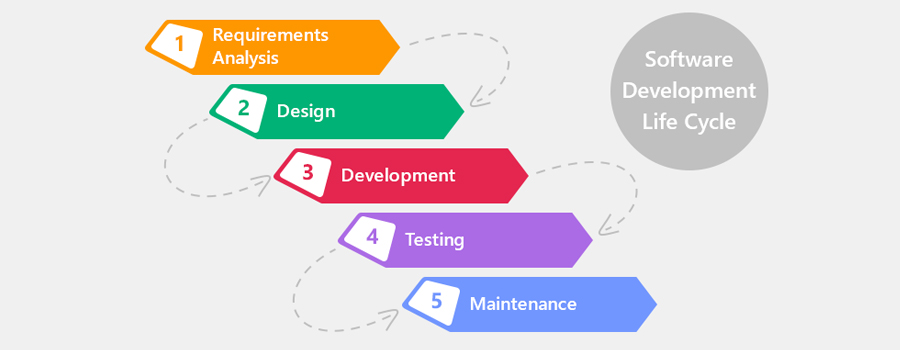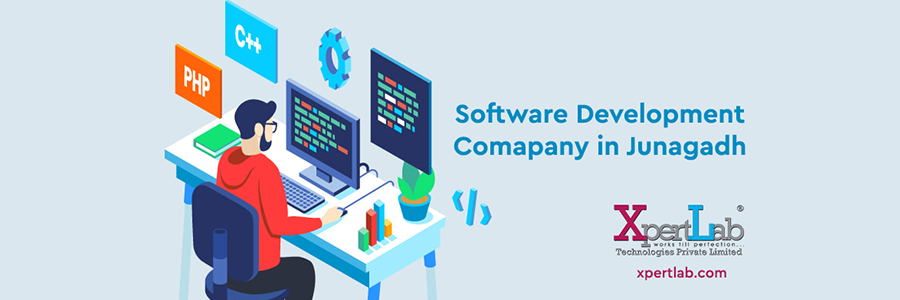SDLC (Software Development Life Cycle)

What is Db2?
18th September 2020
Banner Ad Design Tips To Get More Clicks
21st September 2020What is the Software Development Life Cycle?
The software development life cycle (SDLC) is a process used for structuring the development of any software system, from initiation through to implementation. An increase in demand for software to meet customer needs effectively but with less cost and faster delivery, has put tremendous pressure on modern organizations. In order to stay competitive, companies need to correctly build their software, as well as transform their businesses by following efficient software engineering methodologies, practices, and concepts. If these the changes are not met, it can mean a drop in productivity and ultimately, the failure of the business. Customer interaction at all levels along with the right methodology for implementing the software, is crucial to the success of any organization
SDLC is considered to be the foundation for all software development methodologies, with various activities associated with each level. Activities such as budgets, requirements gathering, and documentation writing, are included in the cycle, as well as the more technical elements. SDLC usually begins with determining customer business needs, which is followed by implementation and testing. The cycle ends when all requirements have been fulfilled. The software development life cycle comprises of seven distinct phases:
- Planning
- Analysis
- Design
- Development
- Testing
- Deployment
Why use the Software Development Life Cycle?
Phase 1: Planning
In the planning phase, project goals are determined and a high-level plan for the intended project is established. Planning is the most fundamental and critical organizational phase. The three primary activities involved in the planning phase are as follows:
- Identification of the system for development
- Feasibility assessment
- Creation of project plan
Phase 2: Analysis
In the analysis phase, end user business requirements are analyzed and project goals converted into the defined system functions that the organization intends to develop. The three primary activities involved in the analysis phase are as follows:
- Gathering business requirement
- Creating process diagrams
- Performing a detailed analysis
Business requirement gathering is the most crucial part at this level of SDLC. Business requirements are a brief set of business functionalities that the system needs to meet in order to be successful. Technical details such as the types of technology used in the implementation of the system need not be defined in this phase. A sample business requirement might look like “The system must track all the employees by their respective department, region, and the designation”. This requirement is showing no such detail as to how the system is going to implement this requirement, but rather what the system must do with respect to the business.
Phase 3: Design
In the design phase, we describe the desired features and operations of the system. This phase includes business rules, pseudo-code, screen layouts, and other necessary documentation. The two primary activities involved in the design phase are as follows:
- Designing of IT infrastructure
- Designing of system model
To avoid any crash, malfunction, or lack of performance, the IT infrastructure should have solid foundations. In this phase, the specialist recommends the kinds of clients and servers needed on a cost and time basis, and technical feasibility of the system. Also, in this phase, the organization creates interfaces for user interaction. Other than that, data models and entity relationship diagrams (ERDs) are also created in the same phase.
Phase 4: Development
In the development phase, all the documents from the previous phase are transformed into the actual system. The two primary activities involved in the development phase are as follows:
- Development of IT infrastructure
- Development of database and code
In the design phase, only the blueprint of the IT infrastructure is provided, whereas in this phase the organization actually purchases and installs the respective software and hardware in order to support the IT infrastructure. Following this, the creation of the database and actual code can begin to complete the system on the basis of given specifications.
Phase 5: Testing
In the testing phase, all the pieces of code are integrated and deployed in the testing environment. Testers then follow Software Testing Life Cycle activities to check the system for errors, bugs, and defects to verify the system’s functionalities work as expected or not, often. The two primary activities involved in the testing phase are as follows:
- Writing test cases
- Execution of test cases
Testing is a critical part of software development life cycle. To provide quality software, an organization must perform testing in a systematic way. Once test cases are written, the tester executes them and compares the expected result with an actual result in order to verify the system and ensure it operates correctly. Writing test cases and executing them manually is an intensive task for any organization, which can result in the success of any business if executed properly.
Phase 6: Deployment
During this next phase, the system is deployed to a real-life (the client’s) environment where the actual user begins to operate the system. All data and components are then placed in the production environment. This phase is also called referred to as ‘delivery.’
Phase 7: Maintenance
In the maintenance phase, any necessary enhancements, corrections, and changes will be made to make sure the system continues to work, and stay updated to meet the business goals. It is necessary to maintain and upgrade the system from time to time so it can adapt to future needs. The three primary activities involved in the maintenance phase are as follows:
- Support the system users
- System maintenance
- System changes and adjustment
The Importance of SDLC
It is necessary give structure to the several phases involved in software development efforts and SDLC serves that purpose. The cycle does not conclude until all the requirements have been fulfilled, and will continue until all the potential needs are adjusted within the system. The biggest advantage of the software development life cycle is that it provides control of the development process to some extent, and ensures the system complies with all the requirements that have been specified. However, there are some disadvantages to using SDLC. It does not work so well where there there are levels of uncertainty or unnecessary overheads. It directs the development efforts with an emphasis on planning, but the system does not encourage creative input or innovation throughout the lifecycle. For those reasons, organizations tend to adopt Agile, and other such methodologies, which are incremental rather than sequential.





